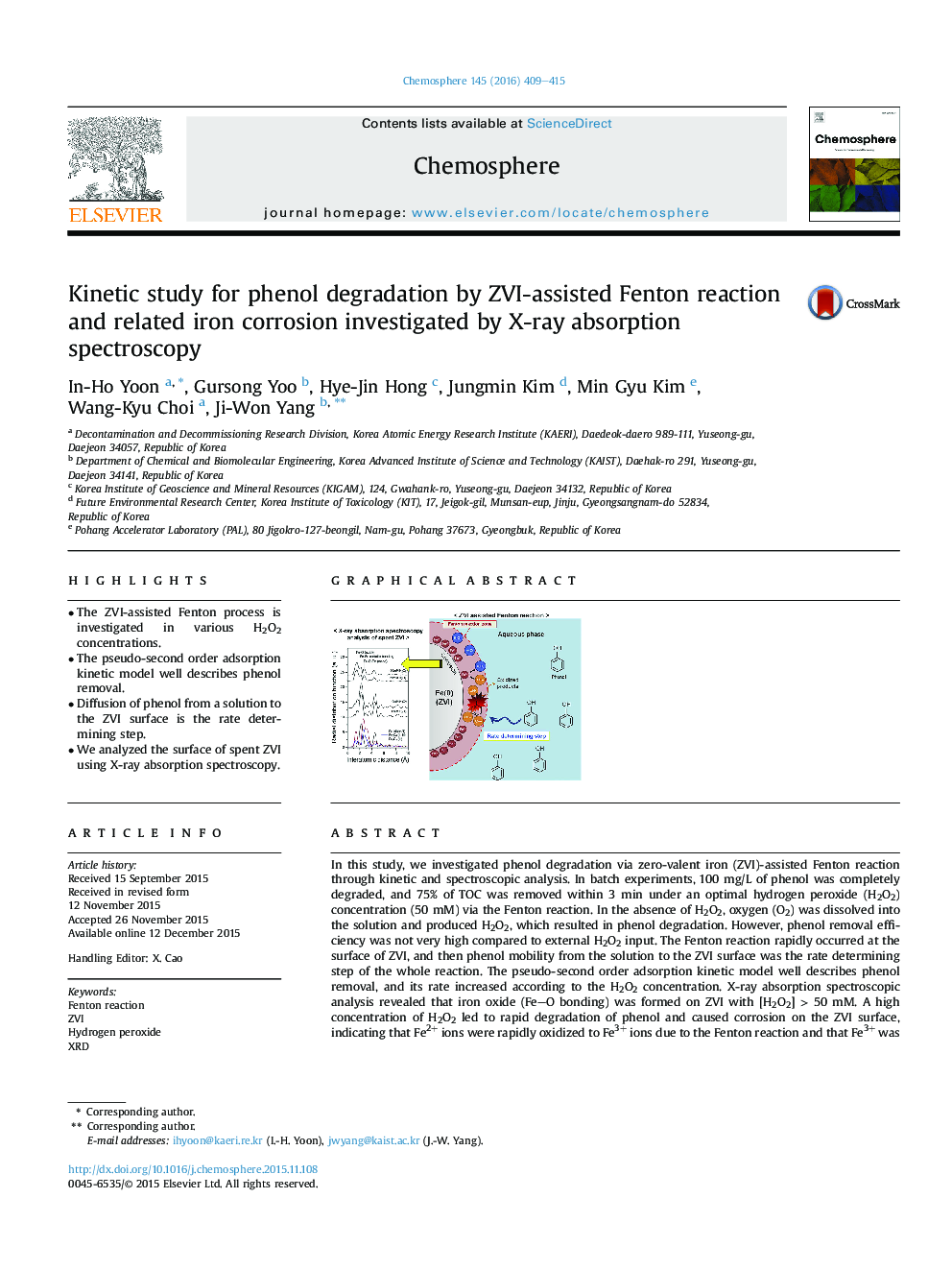| Article ID | Journal | Published Year | Pages | File Type |
|---|---|---|---|---|
| 6307042 | Chemosphere | 2016 | 7 Pages |
â¢The ZVI-assisted Fenton process is investigated in various H2O2 concentrations.â¢The pseudo-second order adsorption kinetic model well describes phenol removal.â¢Diffusion of phenol from a solution to the ZVI surface is the rate determining step.â¢We analyzed the surface of spent ZVI using X-ray absorption spectroscopy.
In this study, we investigated phenol degradation via zero-valent iron (ZVI)-assisted Fenton reaction through kinetic and spectroscopic analysis. In batch experiments, 100Â mg/L of phenol was completely degraded, and 75% of TOC was removed within 3Â min under an optimal hydrogen peroxide (H2O2) concentration (50Â mM) via the Fenton reaction. In the absence of H2O2, oxygen (O2) was dissolved into the solution and produced H2O2, which resulted in phenol degradation. However, phenol removal efficiency was not very high compared to external H2O2 input. The Fenton reaction rapidly occurred at the surface of ZVI, and then phenol mobility from the solution to the ZVI surface was the rate determining step of the whole reaction. The pseudo-second order adsorption kinetic model well describes phenol removal, and its rate increased according to the H2O2 concentration. X-ray absorption spectroscopic analysis revealed that iron oxide (Fe-O bonding) was formed on ZVI with [H2O2]Â >Â 50Â mM. A high concentration of H2O2 led to rapid degradation of phenol and caused corrosion on the ZVI surface, indicating that Fe2+ ions were rapidly oxidized to Fe3+ ions due to the Fenton reaction and that Fe3+ was precipitated as iron oxide on the ZVI surface. However, ZVI did not show corroded characteristics in the absence of H2O2 due to the insufficient ZVI-assisted Fenton reaction and oxidation of Fe2+ to Fe3+.
Graphical abstractDownload high-res image (266KB)Download full-size image
